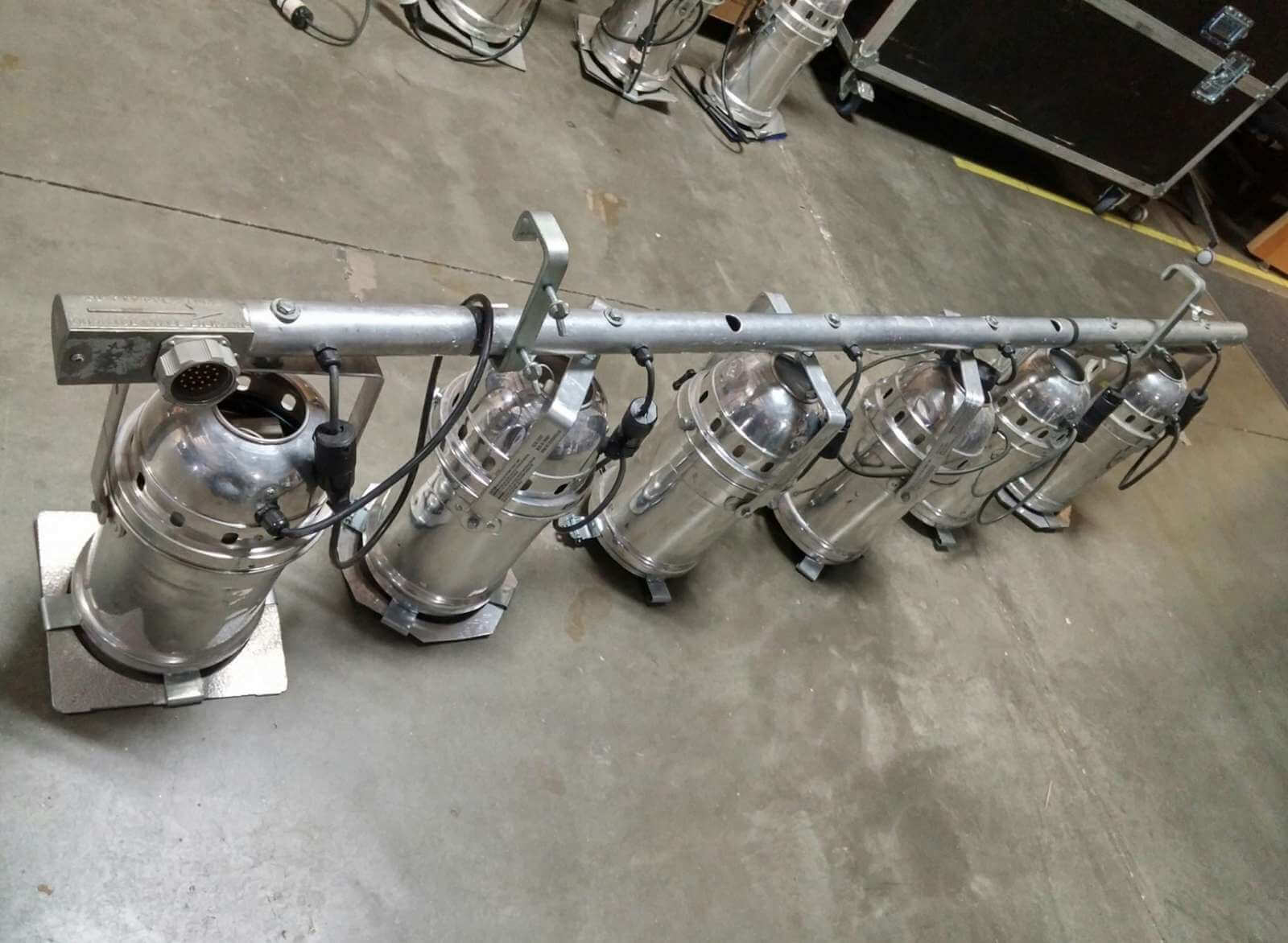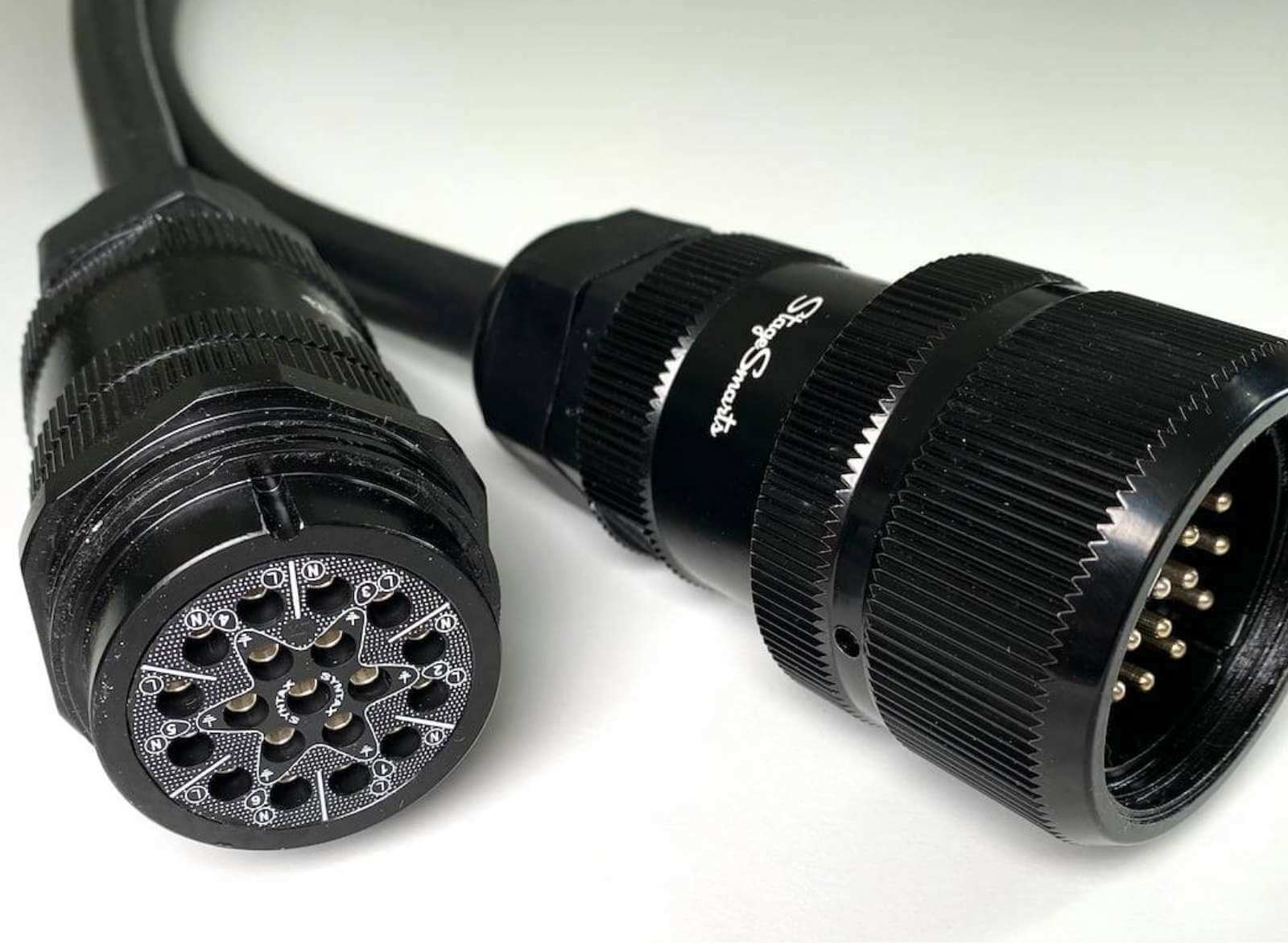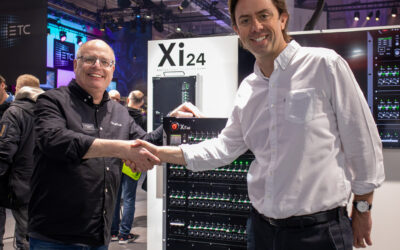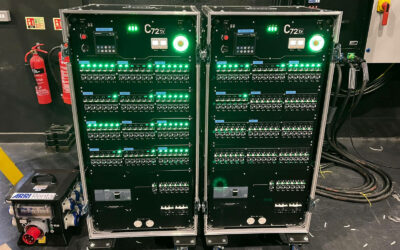How a quick decision turned into a global
de-facto standard.
Everyone working in the events industry is familiar with the term “Socapex”, sometimes shortened to “Soca” or “Soco”. Socapex is actually a French brand of industrial connectors, they make a many different types and today they are part of global connectors giant Amphenol.
In the mid-1970’s, the demand for ever-larger stage lighting systems increased but at the same time, they needed to be designed for quick and easy setup, using mainly untrained local crew. Running individual rubber cables to each individual light was very time consuming, prone to connection mistakes and the combined weight of these cables was also an issue.
Enter the multicore cable
The solution was to combine a number of cables into a single one and use a single connector at each end. This happened kind of simultaneously at a few innovative rental companies, each one had a particular choice of cable and connector type.
But the one that prevailed and became the ‘de facto’ standard was the brainchild of industry innovator Eric Pearce and his technical wiz Ed West at Showlites in the UK. In the mid-1970’s,they not only found a very suitable connector – the Socapex 419AR – but also a good cable, an 18 core PVC cable from Lapp Industries in Germany. This might seem trivial but it was a major step forward for the entertainment lighting industry.

The bar that launched a thousand lamps
Pearce and his team also invented the “6-lamp bar” – a 2.3m long aluminium pipe with six holes to mount lights and the cabling inside the pipe and terminated at 19-pin Socapex connector at one end. Fitted with six lightweight aluminium PAR64 ‘cans’ (invented and produced by Showlites’ competitor Light & Sound Design), this made the massive ‘PAR-can rigs’ of the 1980’s a reality.
Today the venerable PAR64 and its companion 6-lamp bar is almost gone but the “Socapex” connector is still going strong, now delivering the power needed by today’s intelligent lights. Socapex (now part of Amphenol) still makes their version but much improved versions are available from at least a dozen other manufacturers.
So, while other types of connectors exist (especially the ‘Harting’ type) on a global basis, the ‘Soca’ dominates. And to think this is a connector that was just discovered – not the result of a committee that was looking for the ideal solution. Unfortunately, since there is no written standard for the connector type, there is no guarantee that brand X connector will mate with brand Y. Sometimes the pins of one type is slightly too large in diameter for the sockets in other type.
And once in a while, a pair of connectors mate ‘for life’ – making it impossible to disconnect.
Written by Mats Karlsson, CEO of StageSmarts AB





0 Comments